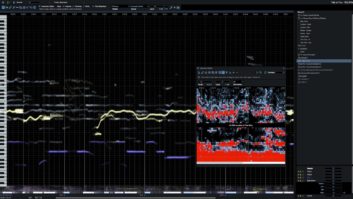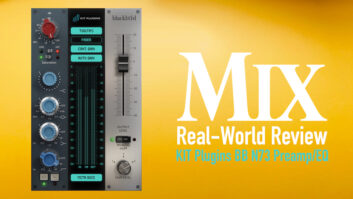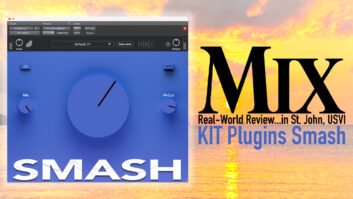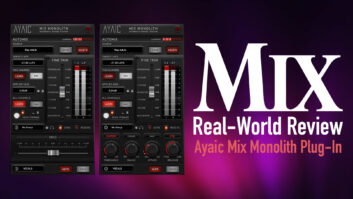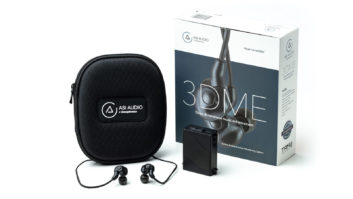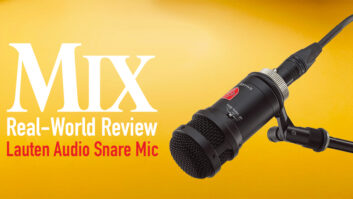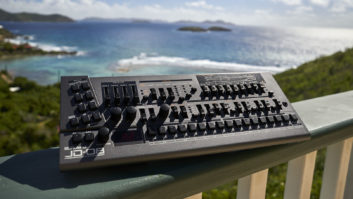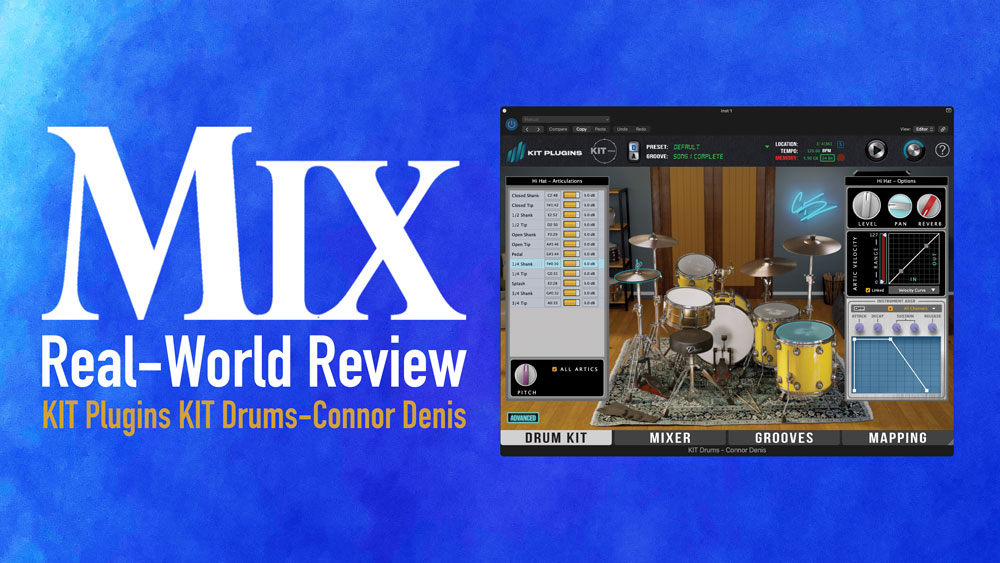
| MIX VERDICT: KIT PLUGINS KIT DRUMS-CONNOR DENIS |
| THE TAKEAWAY: “Kit Drums-Connor Denis is an impressive drum instrument with plenty of well-thought-out features.” |
| COMPANY: KIT Plugins • www.kitplugins.com PRICE: $49 introductory price; $69 regular price PROS: • Excellent sounds. • Well-designed GUI. • Built-in Compressor, EQ, Saturation and Reverb. • Adjust levels of multiple mics on Kick and Snare. • Easy to import MIDI files. • Comprehensive MIDI mapping features. • Excellent value. CONS: • Grooves are limited. • Loading grooves can be confusing. • Loading grooves can be confusing. |
New York, NY (October 30, 2024)—KIT Plugins, developers of the renowned line of digitally modeled gear from Blackbird Studio in Nashville, recently released KIT Drums-Connor Denis, its first virtual instrument. The versatile, high-quality drum plug-in was created in collaboration with Connor Denis, a Florida-based touring and session drummer best known for his live work with Beartooth. The drums are sampled from his Gretsch USA Custom Kit.
The Drum Kit page, one of four selectable screens that also includes the Mixer, Groove and Mapping pages, depicts an animated version of the kit, which features five sampled drums: Kick, Snare, High Tom, Mid Tom and Floor Tom. It also includes hi-hats, a ride and two crash cymbals. Although the plug-in only includes one kit, many of the kit pieces have multiple variations, which you can access via contextual menus. You can switch between 22-inch and 24-inch kick versions.
For snares, you get Gretsch, Craviotto, Phosphoric Bronze and Keplinger 6.5 x 14-inch and Q Aluminum and Q Copper 5.5 x 14-inch versions. The Crash 2 cymbal can be toggled between 19-inch and 20-inch versions, and the ride between Zildjian A Custom Sweet Ride 21-inch and Zildjian K Light ride 24-inch versions.
As is typical on a virtual drum kit, any drum or cymbal can be auditioned by clicking on it. When a kit piece gets triggered by a MIDI note, you see the hits on the appropriate drum or cymbal in real time.
The 24-bit samples sound excellent, but those sonics come at the cost of high RAM usage. When open, the plug-in takes up slightly more than 6 GB of RAM. I compared it with Toontrack Superior Drummer 3, NI Kontakt 7 Modern Drummer, and the Drummer instrument in Logic, and they all were in the 2 to 3 GB range. Fortunately, clicking on the 24-bit indicator near the top of the screen switches the plug-in to 16-bit samples, which still sound quite good and only use about 3 GB of RAM.
The instrument includes both a plug-in and standalone version. The functionality is virtually the same in both.

IMPRESSIVELY ARTICULATE
The sonic flexibility of KIT Drums-Connor Denis is one of its top selling points. Clicking on the Advanced button on the Drum Kit page opens up additional windows for tweaking various performance parameters. Clicking on a kit piece on the screen makes it active for editing. On the left side of the GUI, a long vertical window appears in which you can adjust sliders to change the level of the available Articulations for each kit piece.
An Articulation is a type of hit for a specific drum or cymbal triggered by its own MIDI note. The Kick, Toms and Crashes have one Articulation each. Snare has three: Center Hit, Rim Shot and Side Stick. The ride has Bell, Edge and Bow Tip. The hi-hat offers 12 Articulations.
At the bottom of the Articulation window is a Pitch knob with a checkbox next to it that says All Artics. By default, it’s checked, which means a change in pitch gets applied to all Articulations for the selected drum or cymbal. If you want to get creative, you can uncheck All Artics and apply separate pitch changes to each.
In Advanced mode, the Instrument Options Panel is on the right side of the Drum Kit window. It facilitates adjusting Level, Pan and Reverb Send for the built-in Reverb for most of the kit pieces—but not the ride and crashes.
The Articulation Velocity panel, just below, is where velocity ranges can be set graphically for a selected Articulation. Below that, Instrument ADSR allows for changing the volume envelope (Attack/Decay/Sustain/Release) for either the whole kit or on individual channels in the Mixer.
MIGHTY MIXING
The versatile Mixer is a significant contributor to the plug-in’s impressive sonic variety. It features channels for Kick, Snare, Hi Tom, Lo Tom, Hi-Hat, Crash 1, Crash 2, Ride, OH (overhead), Room 1, Room 2, Reverb (return) and Master.
Each channel is equipped with a long-throw volume fader. The drum and cymbal channels, except for the Crashes, feature horizontal Pan sliders. Crash 1 and 2 each have a Swap button, which inverts them in the stereo field.
The stereo channels OH, Room 1, Room 2, Reverb and the Master channel sport Stereo/ Mono sliders, which you can use to make the drums more focused and punchy in the mix, or even go fully mono for a retro sound.
Wolff Audio Freq Equalizer—A Mix Real-World Review
All the channels have Solo and Mute buttons, except for the Reverb return channel, where the Solo button is grayed out, and the Master, which has neither. The individual drum and cymbal channels are equipped with polarity flip switches, a Preview Pad that triggers the kit piece for auditioning adjustments, and a Blend button.
Pressing Blend opens another window containing separate channels for each mic used to record the selected drum or cymbal. Each sub-channel has its own Volume, Mute and Polarity Flip control. There are three kick mics and two on the snare, which provides plenty of flexibility in shaping the sounds. The others each have one mic. It’s also possible to adjust how much a kit piece will bleed into the Overhead and Room mic channels. Reverb send and Pitch knobs are included.
The plug-in can be instantiated either for stereo or multiple (16 stereo) outputs. For the latter, you can set individual output assignments from any mixer channel.
MIX EFFECTS
At the top of the Mixer page are controls for the Saturation, EQ and Compression effects, which can be applied separately for drum or cymbal. Saturation, which can range from subtle to heavy, is handy for altering the character of the drums in the kit. In addition to an On/Off button, it offers controls for Gain, Mix, HPF (high-pass filter) and LPF (low-pass filter).
The four-band EQ features semiparametric low and high bands, two fully parametric main bands and high-and low-pass filters. The Compressor sports Threshold, Ratio, Attack, Release and Mix controls, plus a knob labeled Body, which allows you to boost a low-shelf filter centered at 250 Hz. Reverb, which becomes visible when you select the Reverb channel, features controls for Pre-Delay, Size, Damping, HPF and LPF. It’s a nice-sounding reverb with a smooth decay tail.
The generous collection of factory Mixer presets does an excellent job of showcasing the range of sounds the plug-in can produce—everything from a tight, dry kit to an electronic kit to a stadium-style rock kit. Near the top of the plug-in, a Perspective Switch changes the kit from the drummer’s perspective to the audience’s. I haven’t seen this on other virtual drummers, and it’s handy.

MIDI GROOVES AND MAPPING
The Grooves window handles MIDI drum loops.
The plug-in comes with a small groove library that’s a little tricky to install, but once loaded, you’ll see that it contains four songs, each with multiple loops for parts and fills and a full song option. The collection is narrow from a genre perspective, with the songs labeled either Punk or Metal.
Fortunately, you can import individual MIDI files (Type 0) into the plug-in by drag-and-drop. Files show up in the Grooves window under User MIDI. For any loaded MIDI loops, you can apply the Humanize effect, which offers four choices—Natural, Tight, Rushed and Lazy—and a slider that goes from 0 to 100. Even at 100 percent, the effect is pretty subtle, but still useful.
MIDI loops can be exported from the GUI by dragging and dropping them into a DAW track. Loops exported that way will include any Humanize effect you applied. The Grooves window has a Play/Stop-Start button, and there’s also one in the plug-in’s top section.
The other main window is called Mapping. Here, you can change the MIDI mapping to fit imported grooves that use other mapping formats. Supported formats include General MIDI, 2-Box, Toontrack, Roland, Slate, XLN Audio and Yamaha. If you want to create custom mappings, it’s pretty easy: Click on an Instrument Type (kit piece), and when the Articulations appear in a center window, simply drag one onto any note in a large keyboard display showing the current mapping.
If the note you’re moving it to already has an assigned sound, the keyboard will read Multiple. You then must delete the previously assigned Articulation for that note unless you want to create a custom sound layer. You can layer up to 10 Instrument Types on a MIDI note.
On the far right is another “Advanced” window, where you can adjust the velocity curve for each Articulation. It offers presets, or you can drag graph points to set a custom curve. You can also edit Control Change settings from there.
Kit Drums-Connor Denis is an impressive drum instrument with plenty of well-thought-out features and excellent sound, and it competes well with more expensive virtual drummers. It would be nice if it were more RAM-efficient when using the 24-bit samples and if the groove library was more varied, but overall, this is a first-rate plug-in and an excellent value. I look forward to more instrument releases by KIT.
